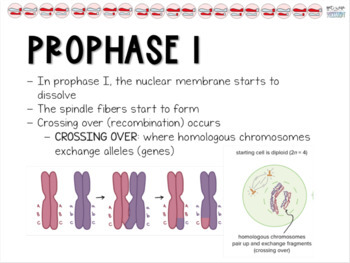


Further information is provided in our Health and Safety guidance. eLibrary users are responsible for ensuring that any activity, including practical work, which they carry out is consistent with current regulations related to Health and Safety and that they carry an appropriate risk assessment. Do NOT follow suggestions which conflict with current advice from CLEAPSS, SSERC or other recent safety guides. Whilst this list provides a source of information and ideas for experimental work, it is important to note that recommendations can date very quickly. There is also opportunity for practical microscopy skills, with students either preparing their own slides or observing commercially pre-prepared specimens that show both types of cell division.

The topic provides good opportunities for modelling anything from pipecleaners to socks can be used to model the behaviour of chromosomes and these models can often be animated using stop motion apps. As with most biology topics, there is a substantial amount of new vocabulary to learn and care is needed over words that sound or are spelt in similar ways. The story must be creative and show correct grammar. The story must include all the parts of a story including characters, plot, dialogue, vivid descriptions and illustrations. Students will need to understand both overall principles (for example, why meiosis is a necessary requirement for sexually reproducing organsims) and detail of processes in order to confidently describe, explain and compare the two types of cell division. Write a children’s storybook Write an original story explaining the steps of mitosis and binary fission. This results in an extra chromosome (n + 1) in two of the gametes and a missing chromosome (n - 1) in two of the gametes.Although this topic will be familiar to most students, there is considerably greater knowledge and understanding required at level 3/KS5 than with earlier study. If nondisjunction occurs in meiosis I, the homologous pair of chromosomes remain bound. Nondisjunction may occur during meiosis I or meiosis II. \): Nondisjunction in Meiosis: Nondisjunction occurs when homologous chromosomes or sister chromatids fail to separate during meiosis, resulting in an abnormal chromosome number.


 0 kommentar(er)
0 kommentar(er)
